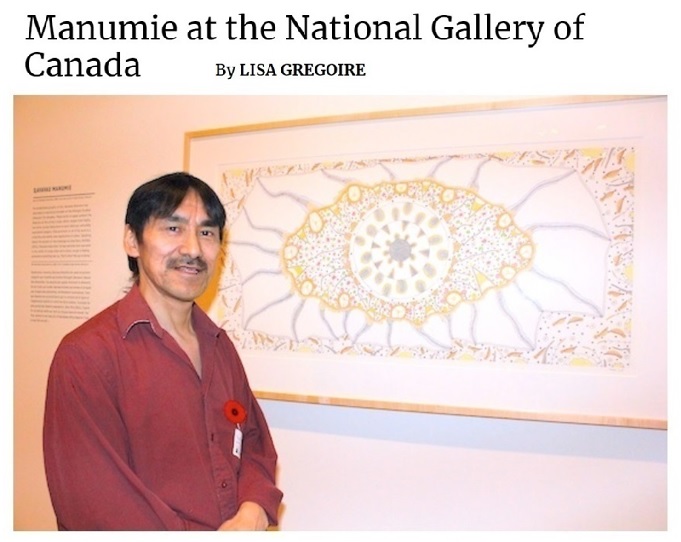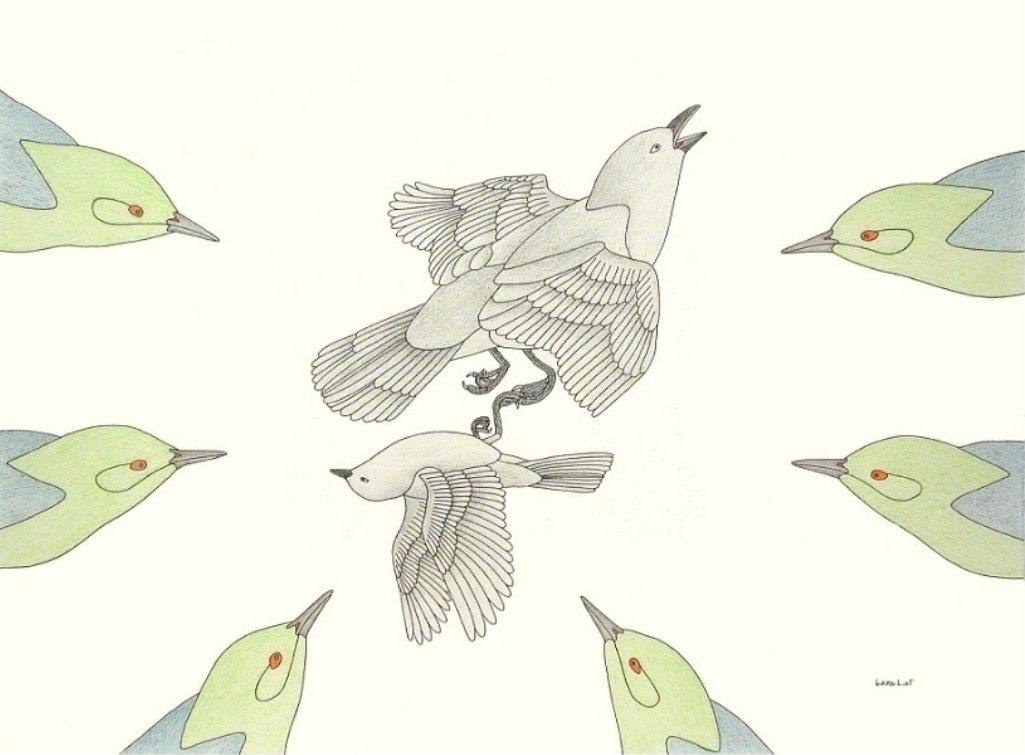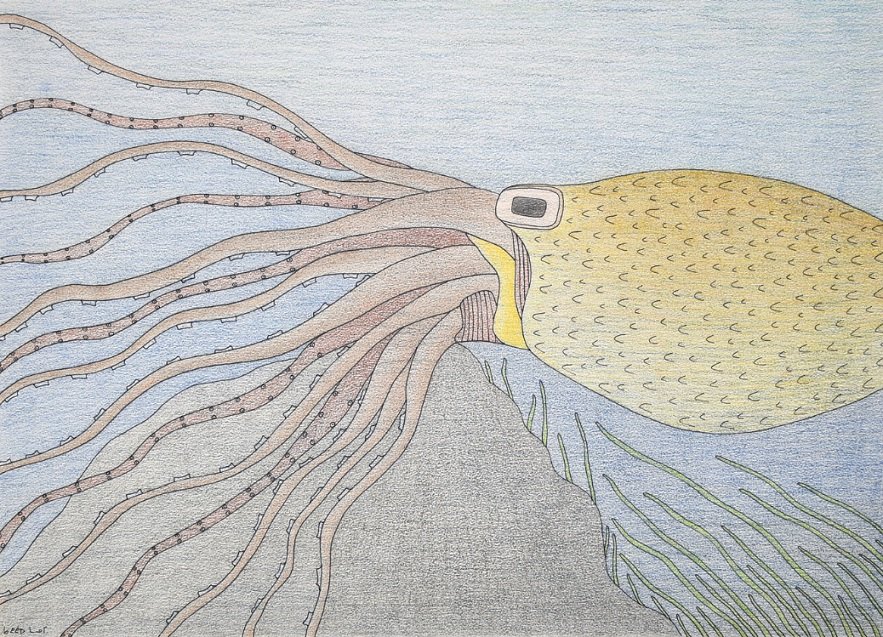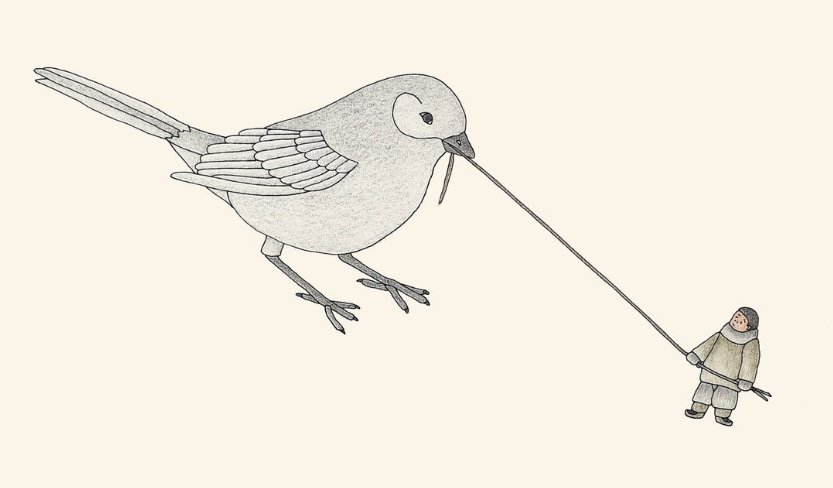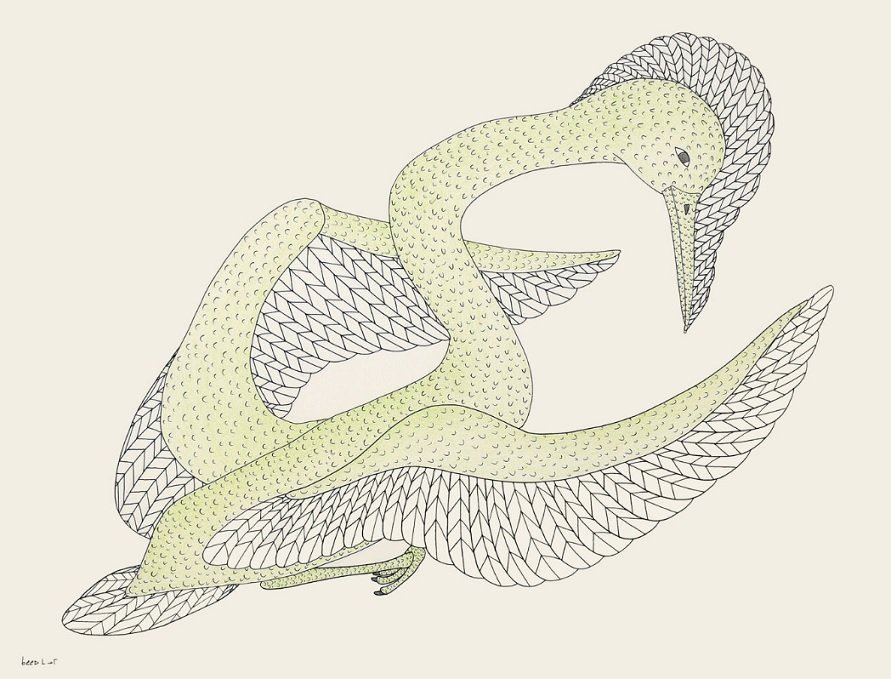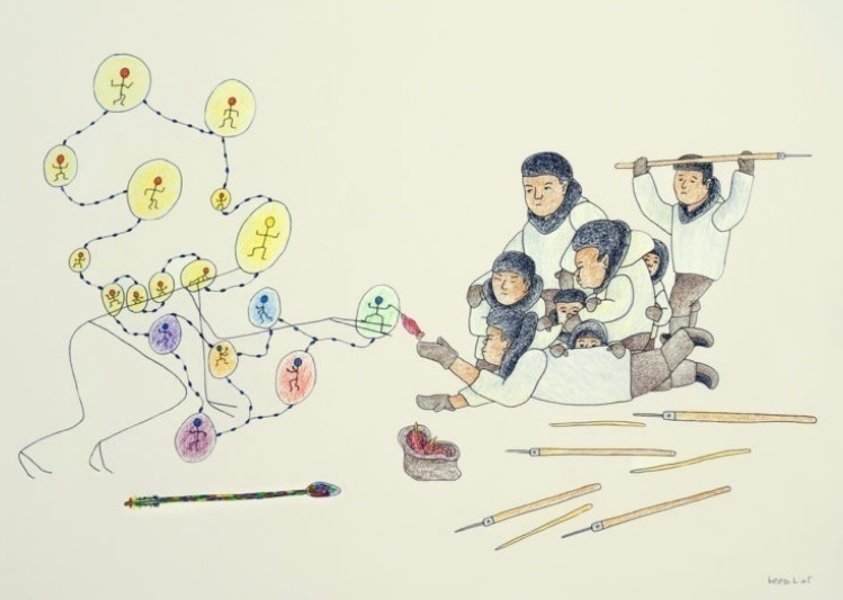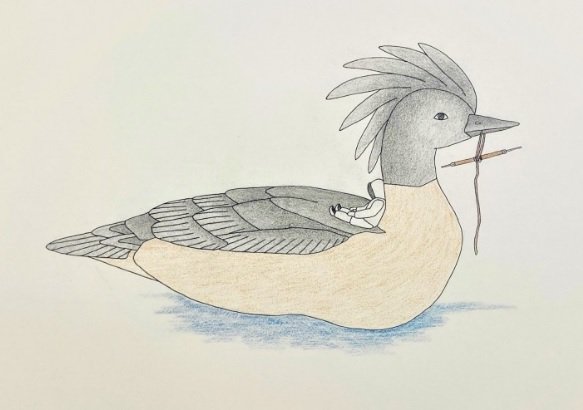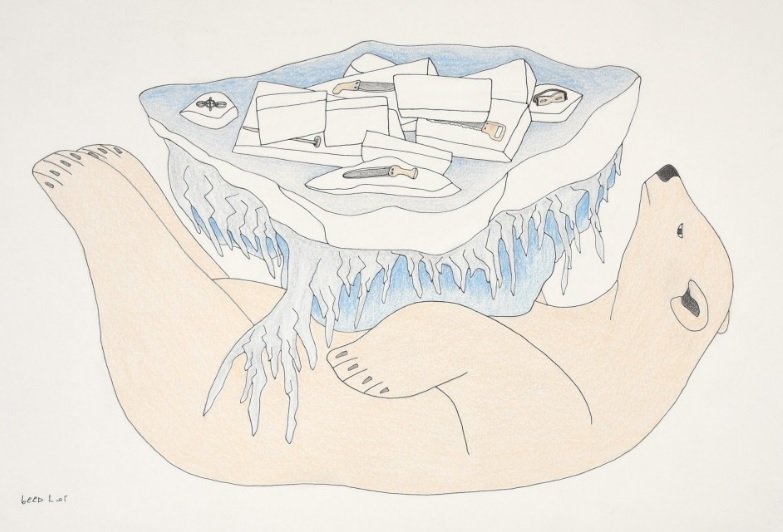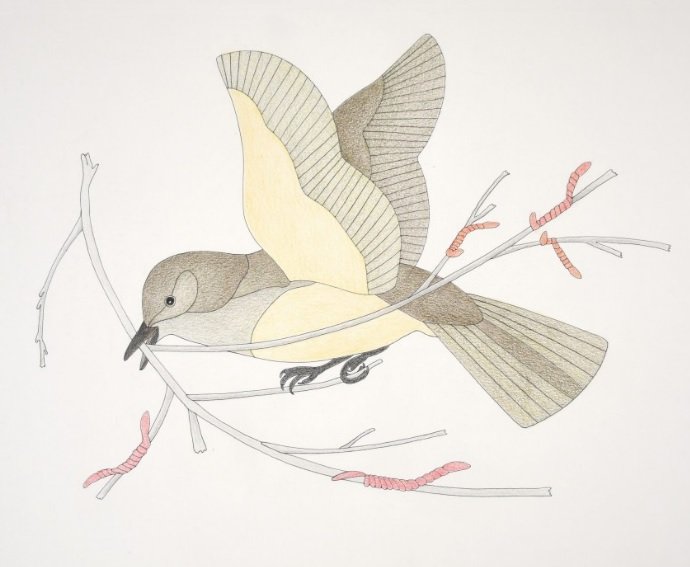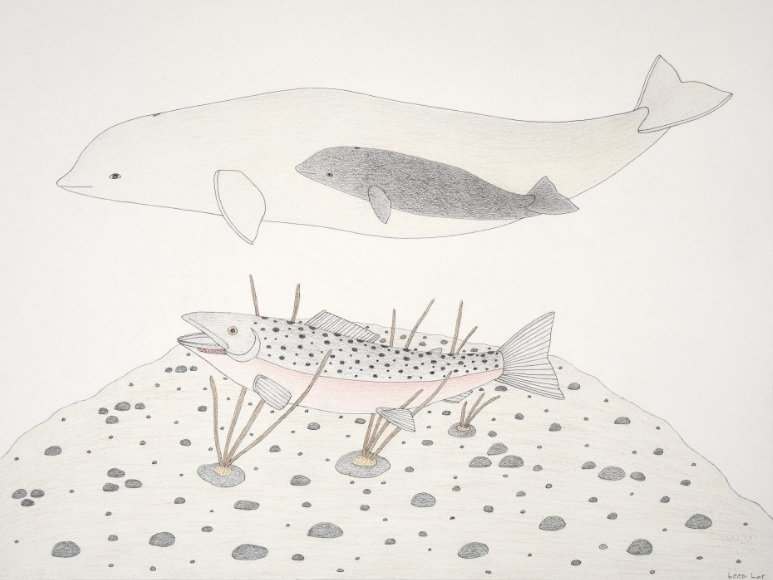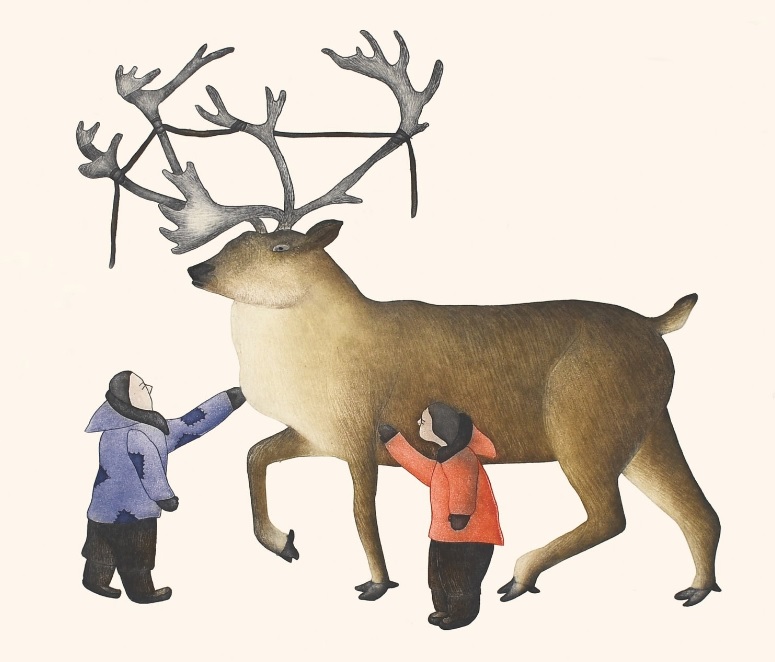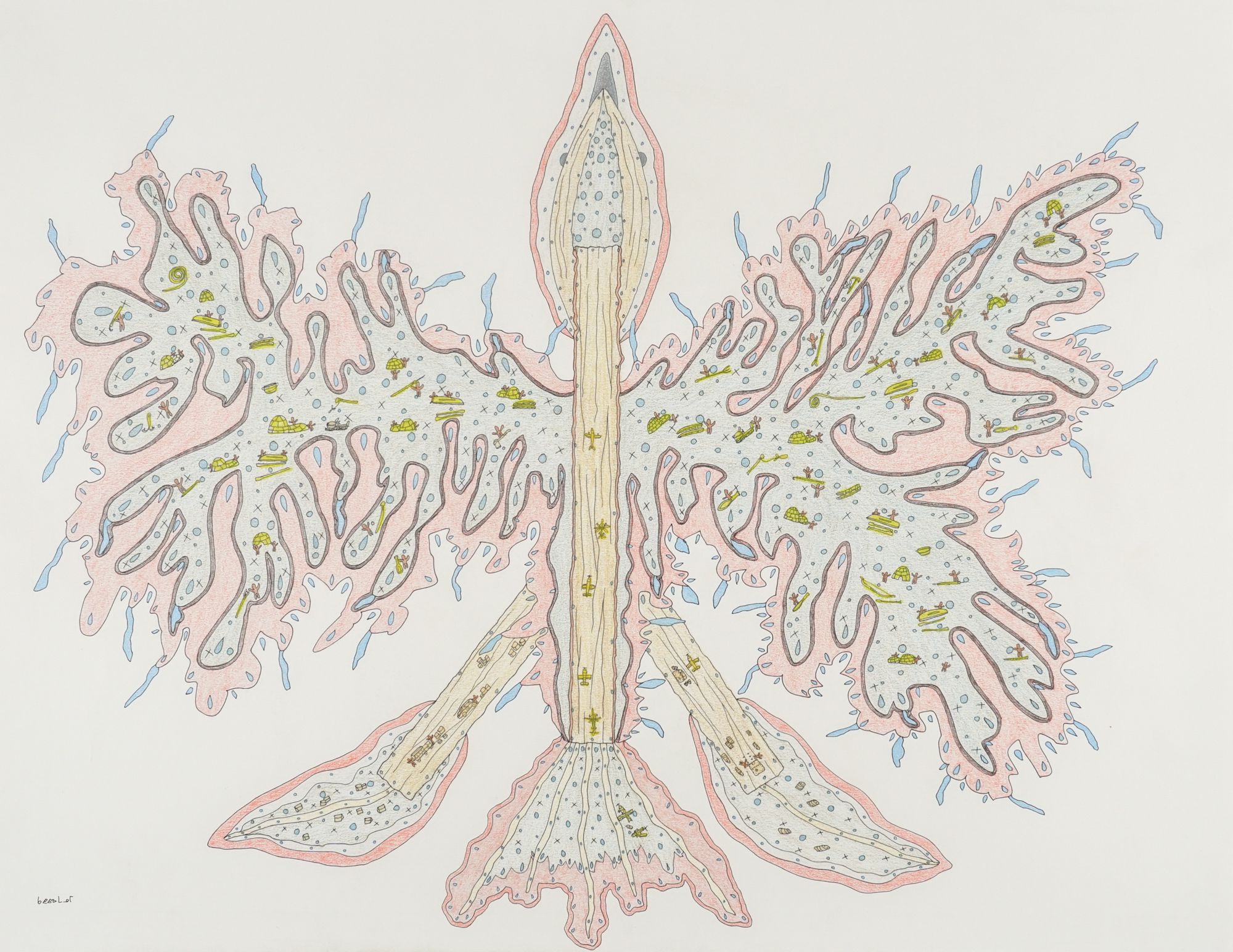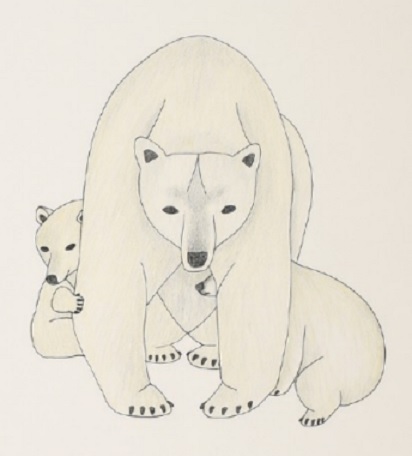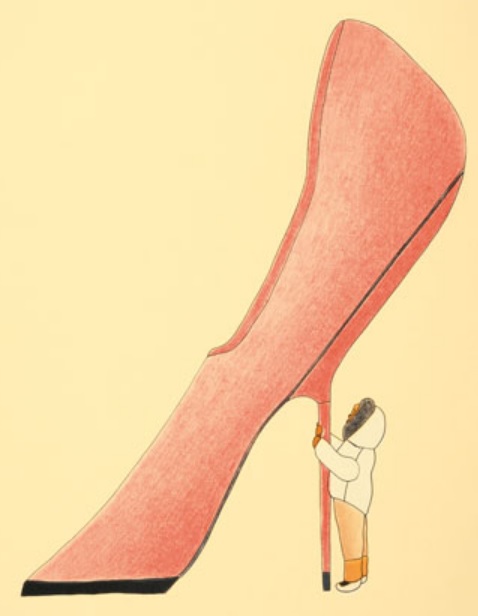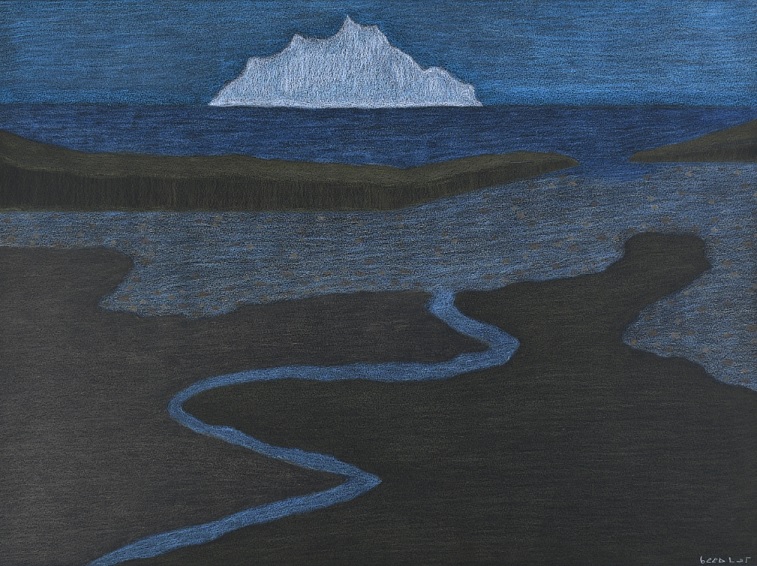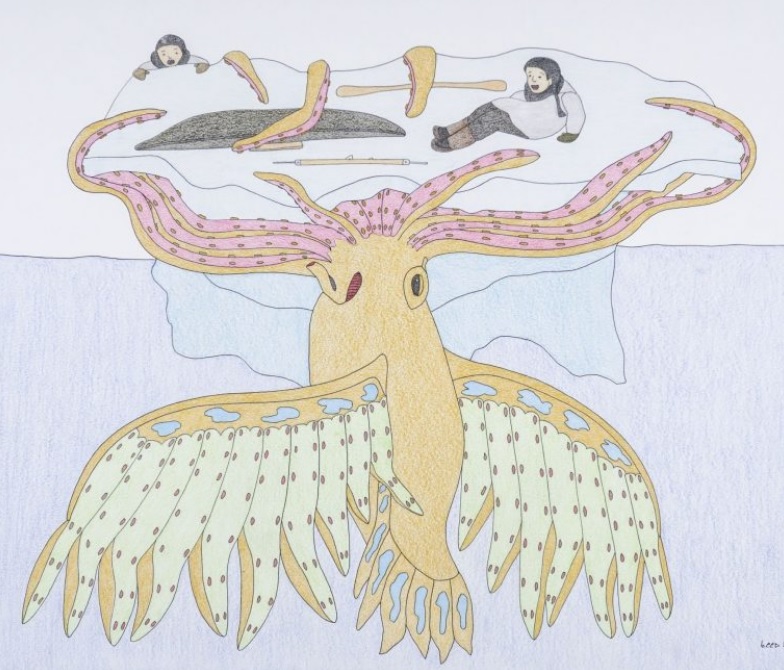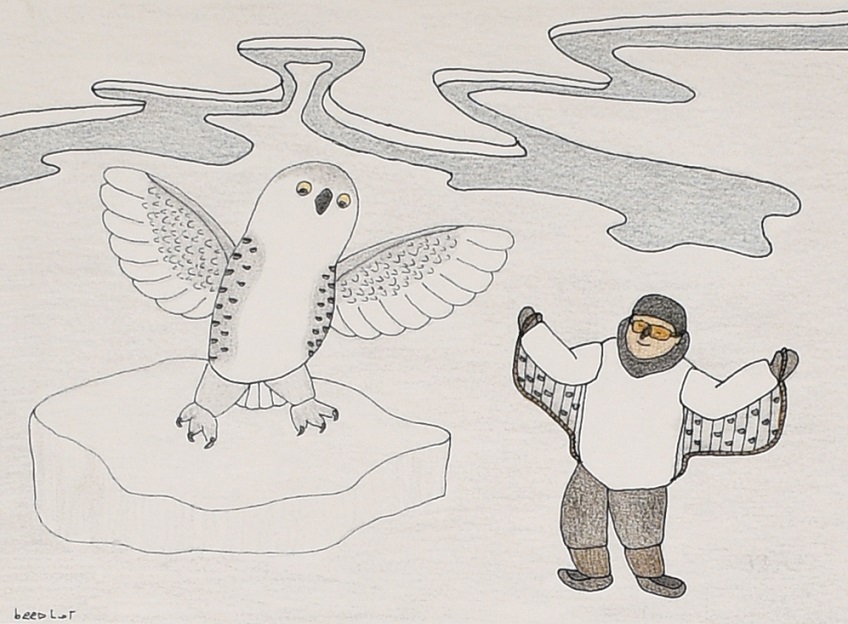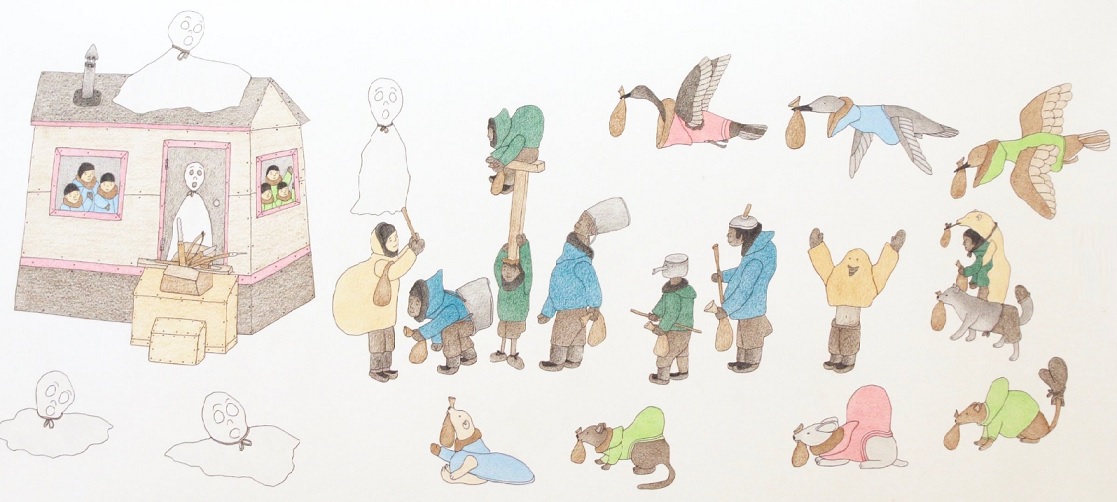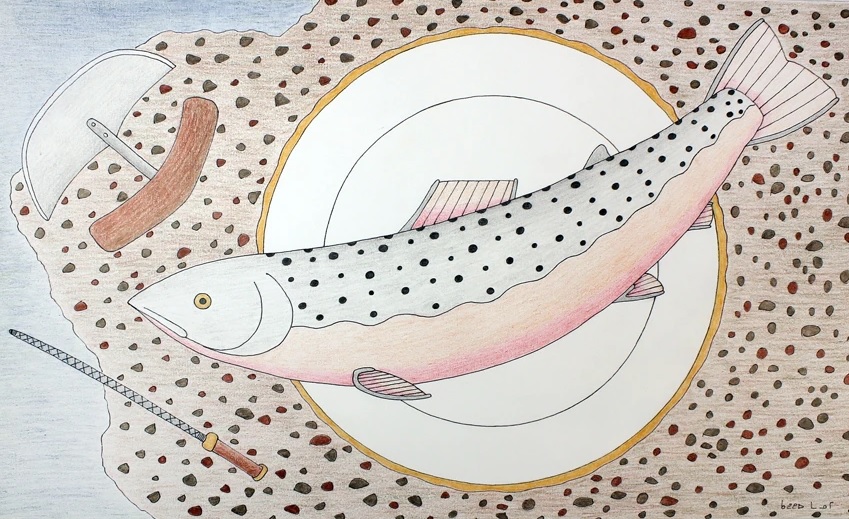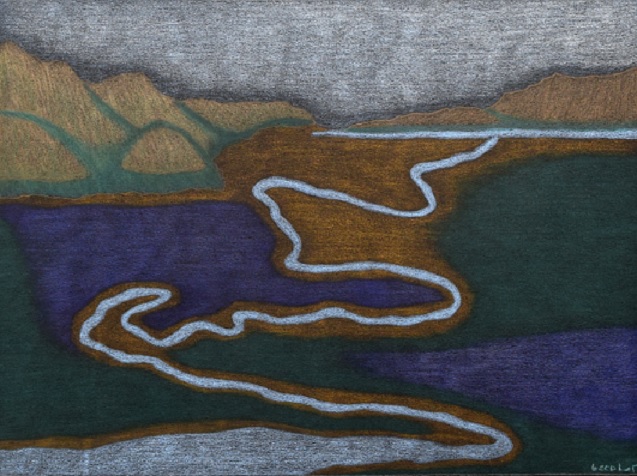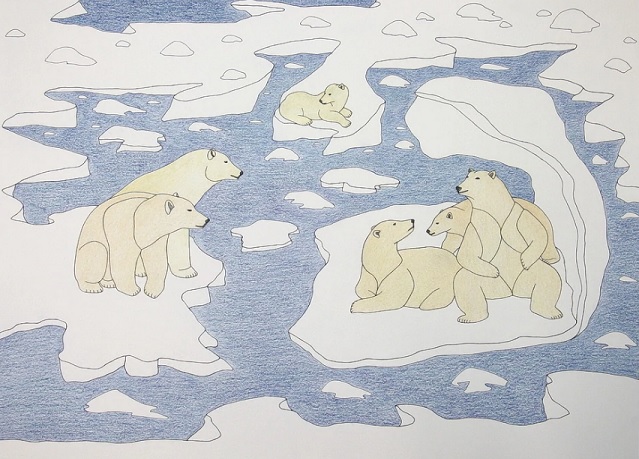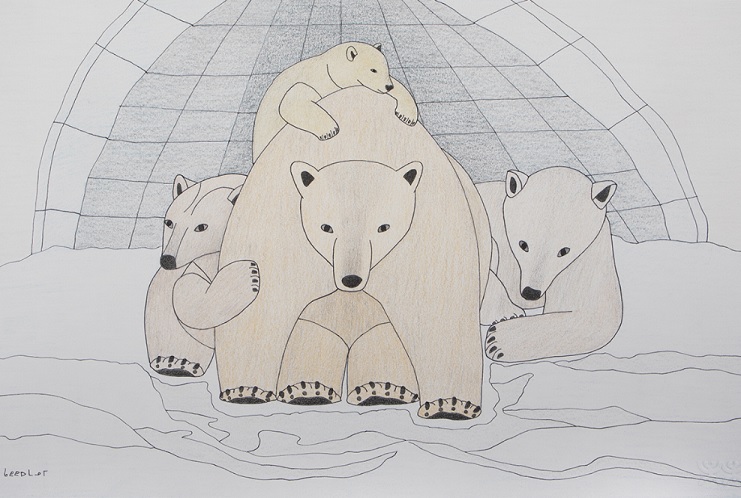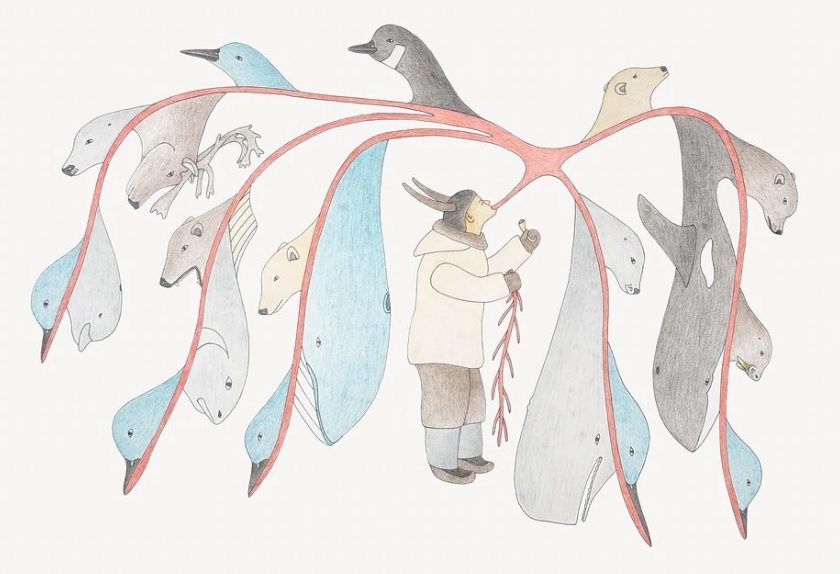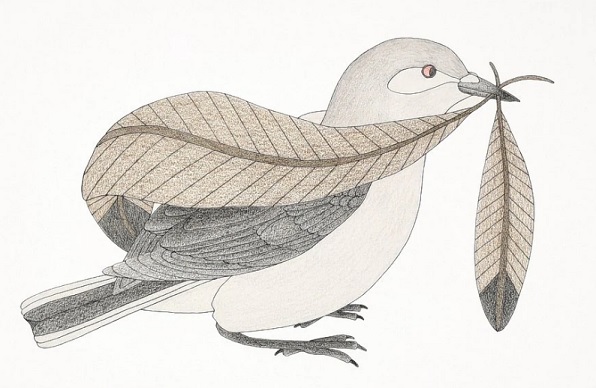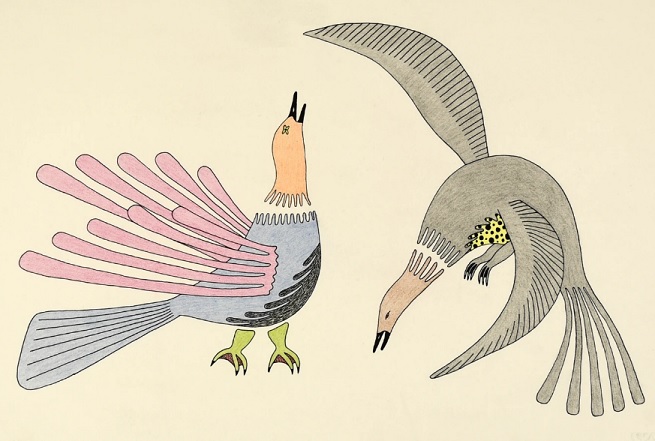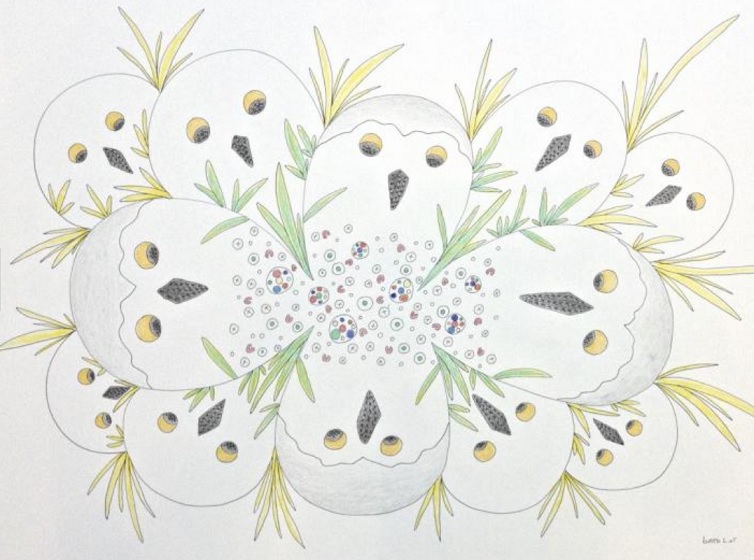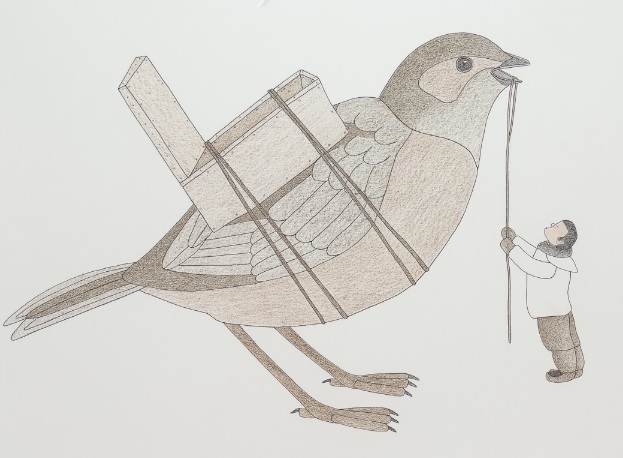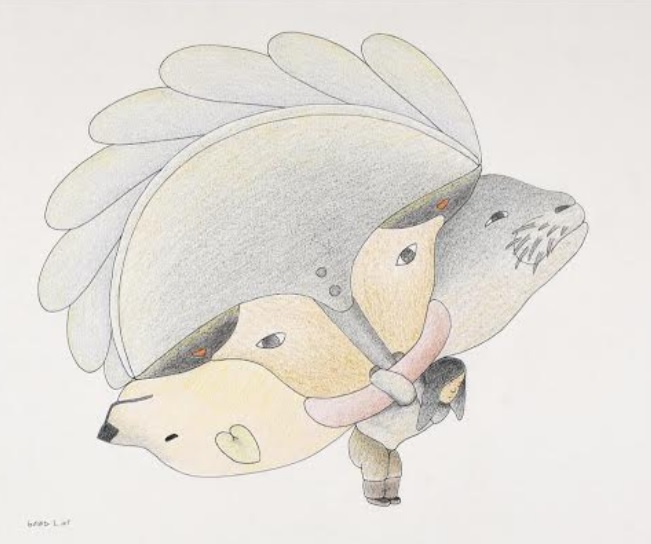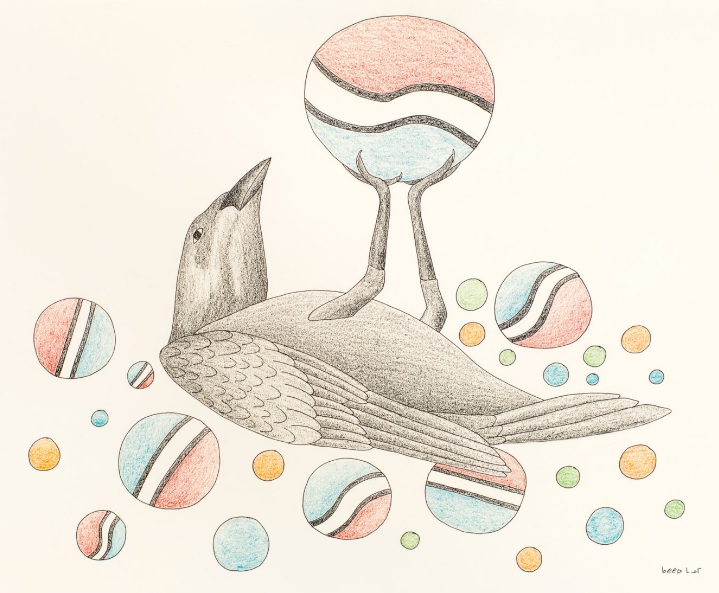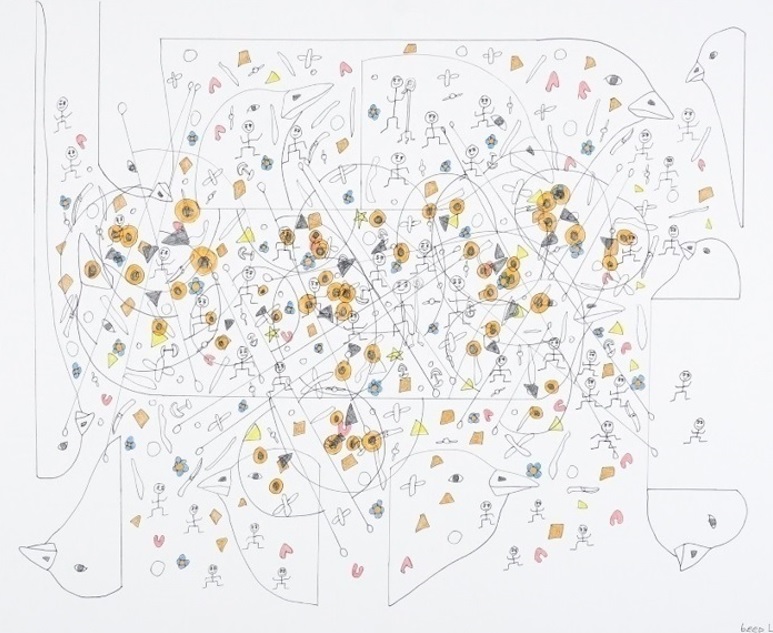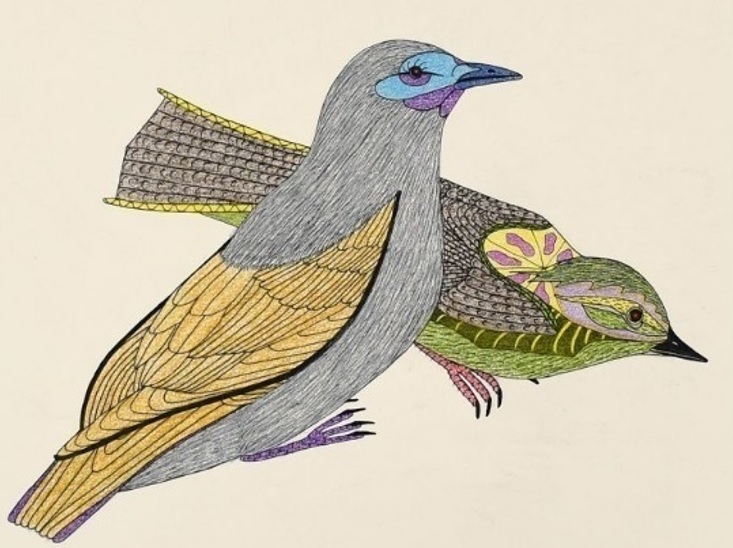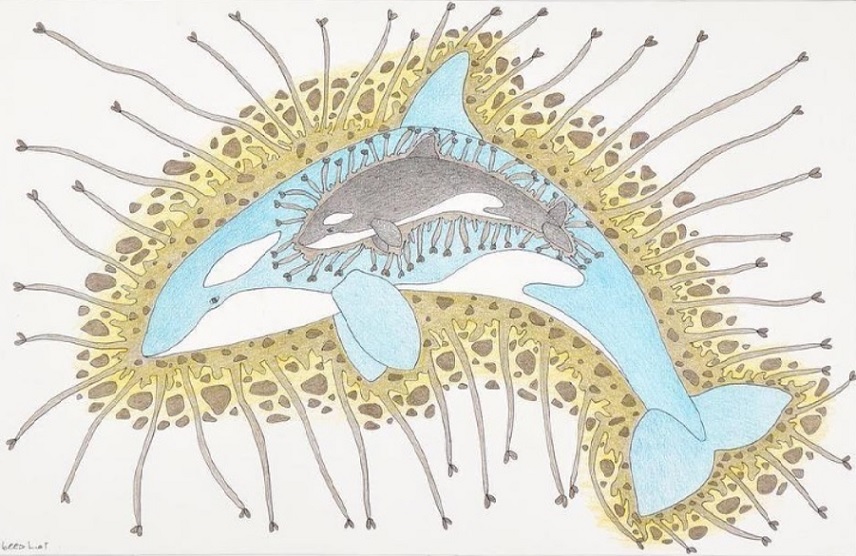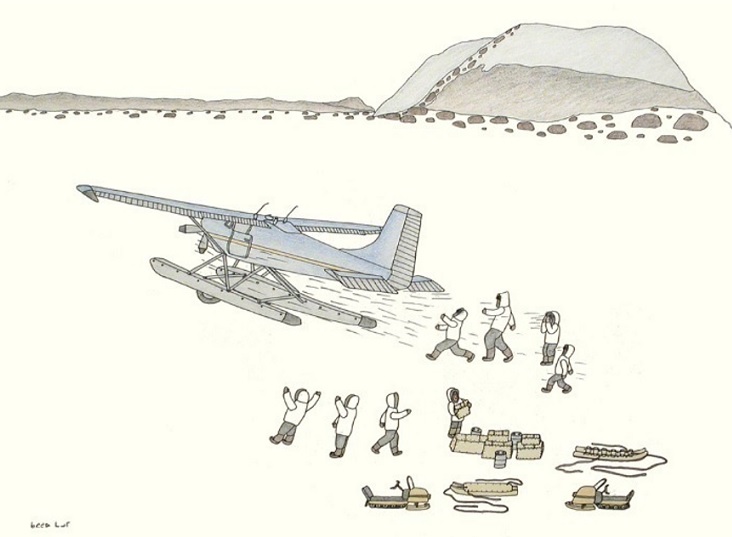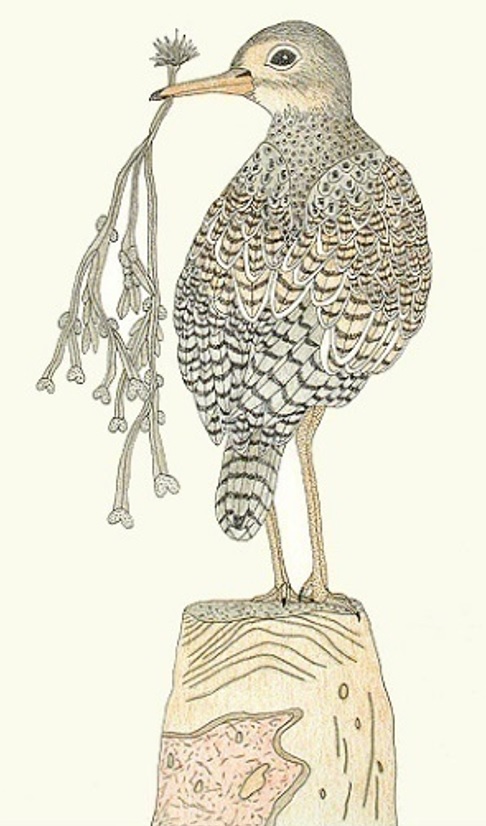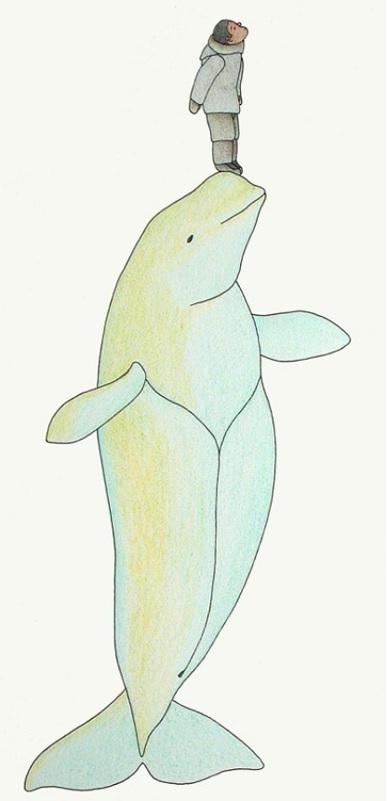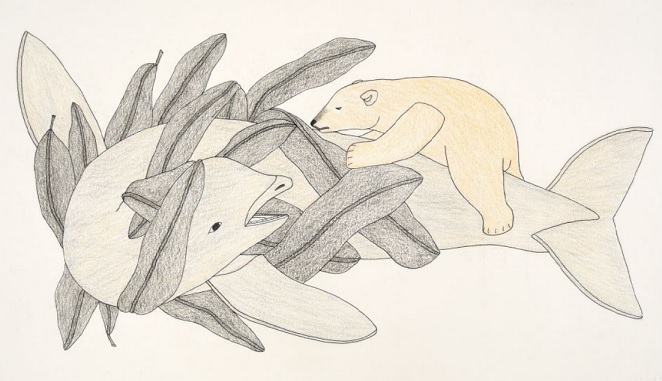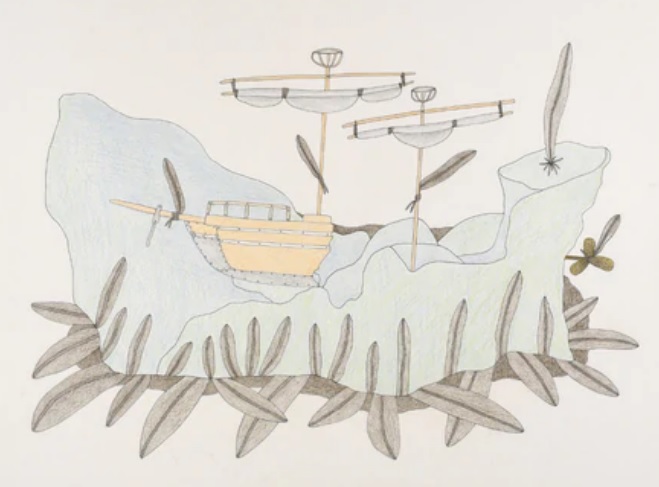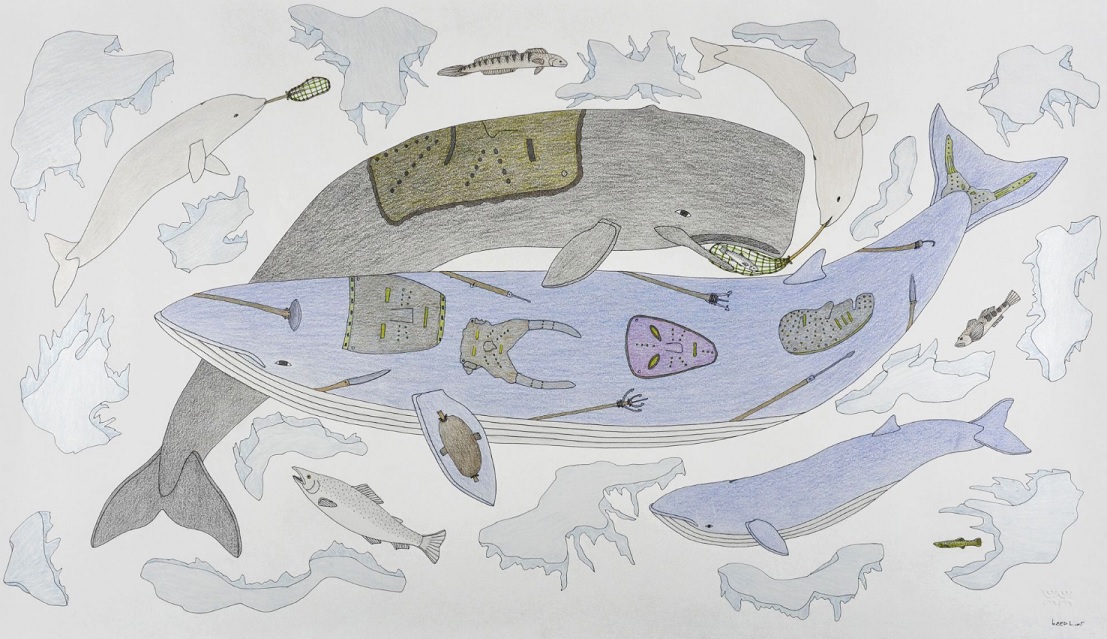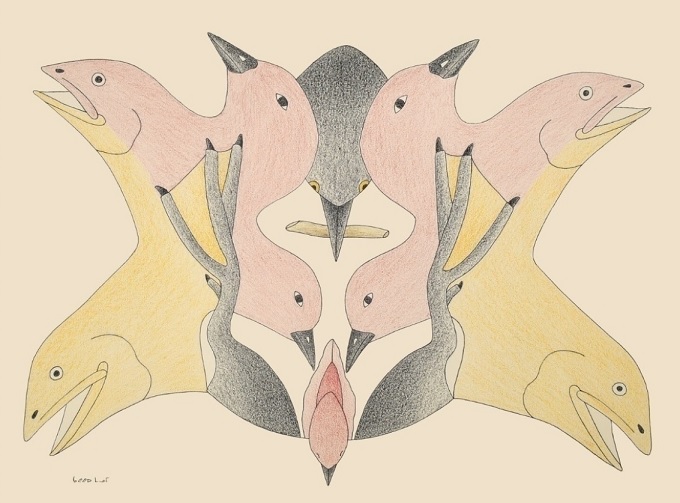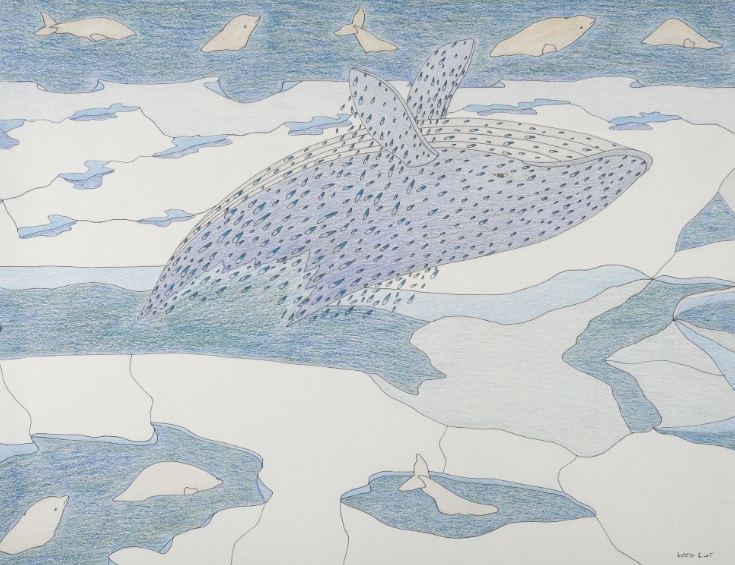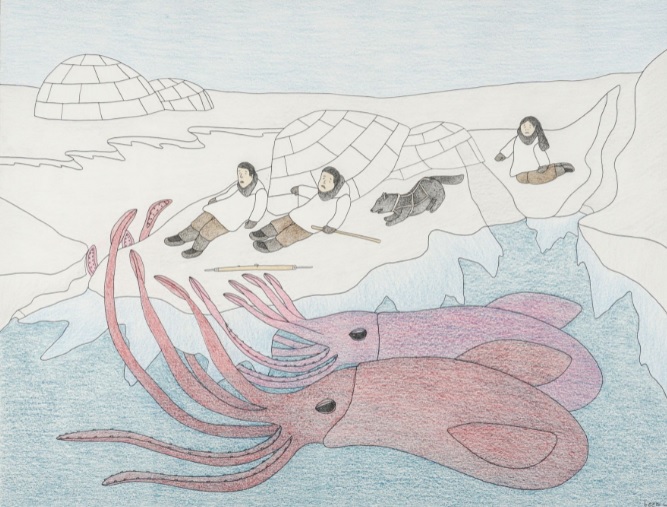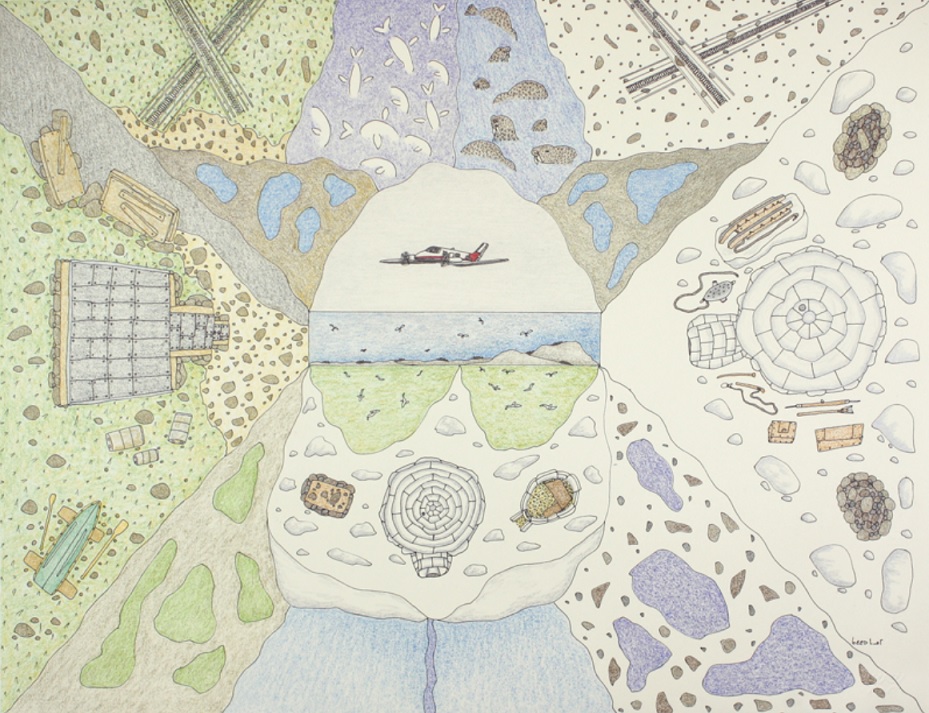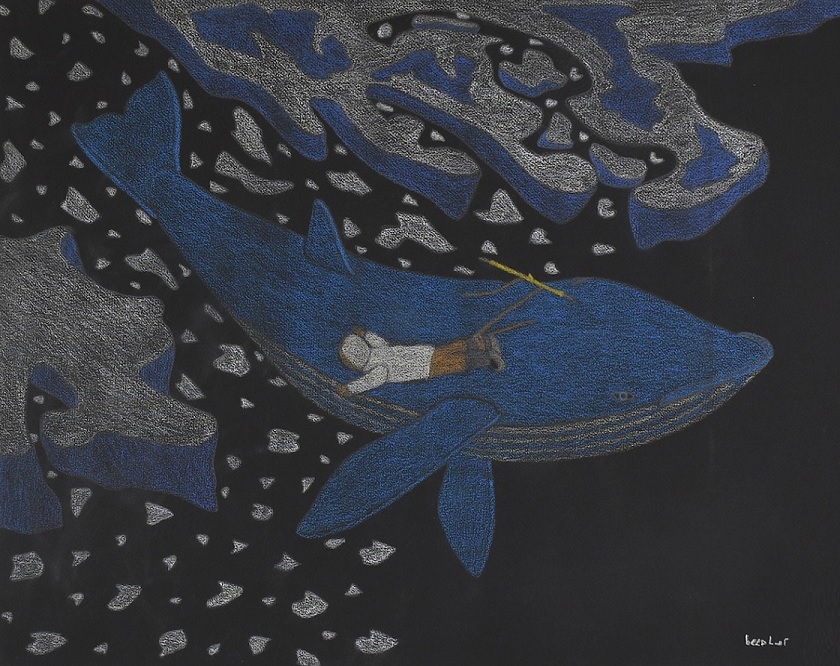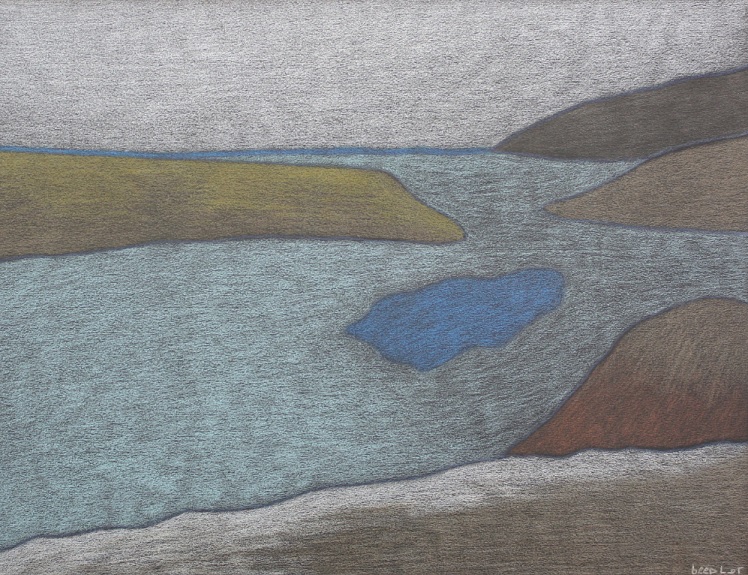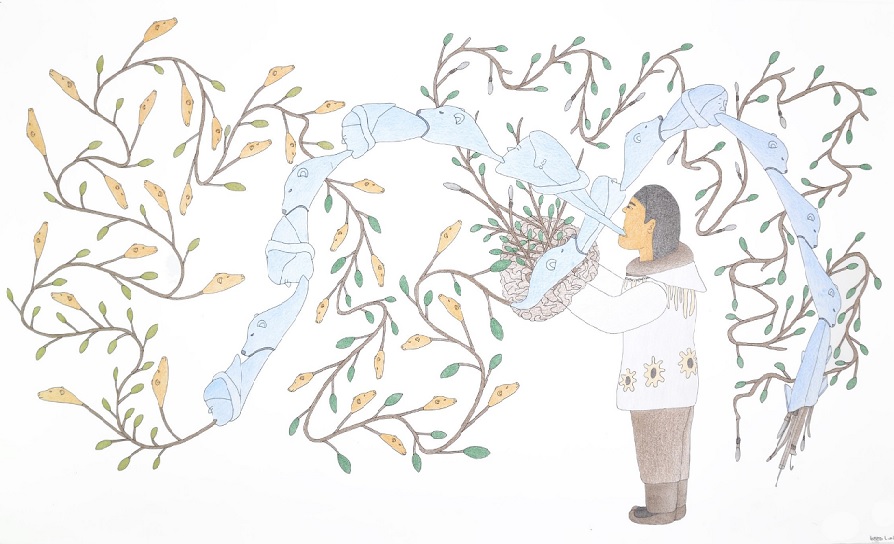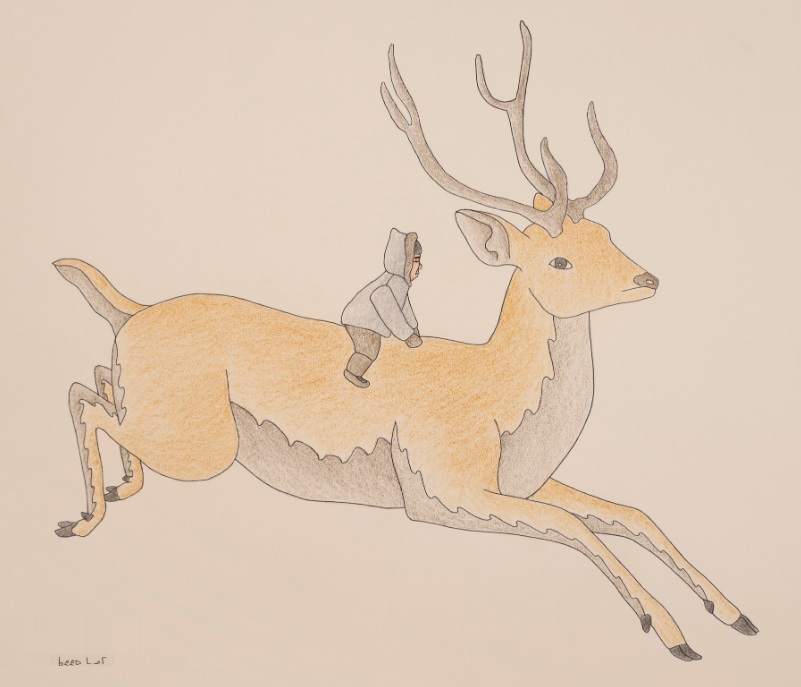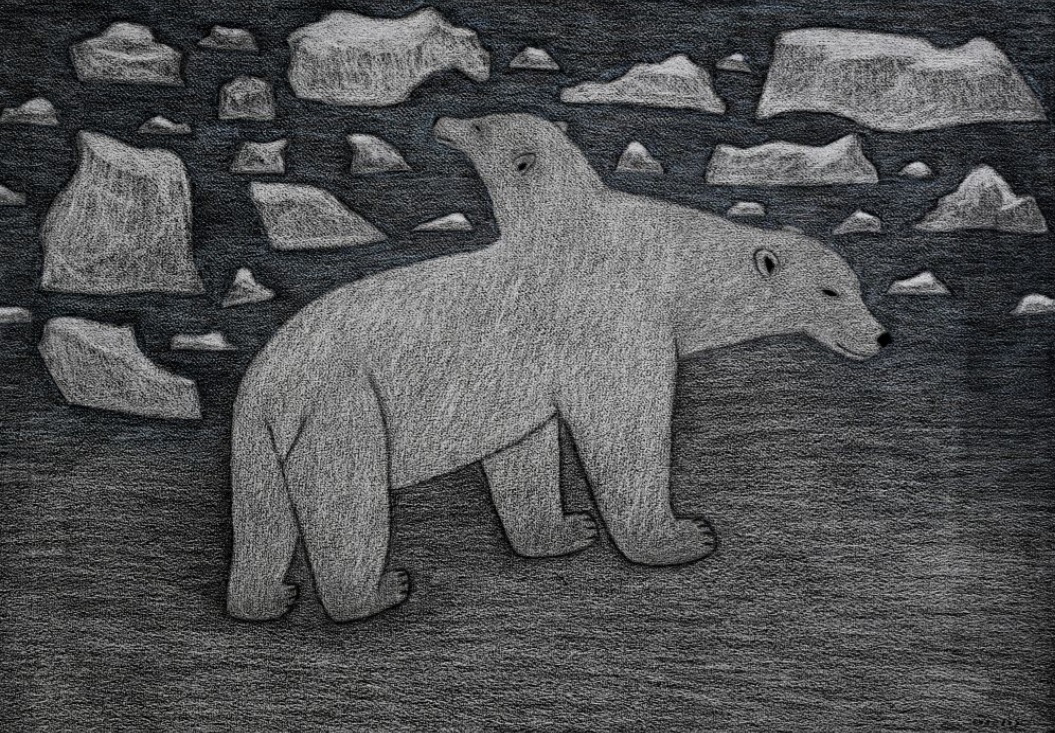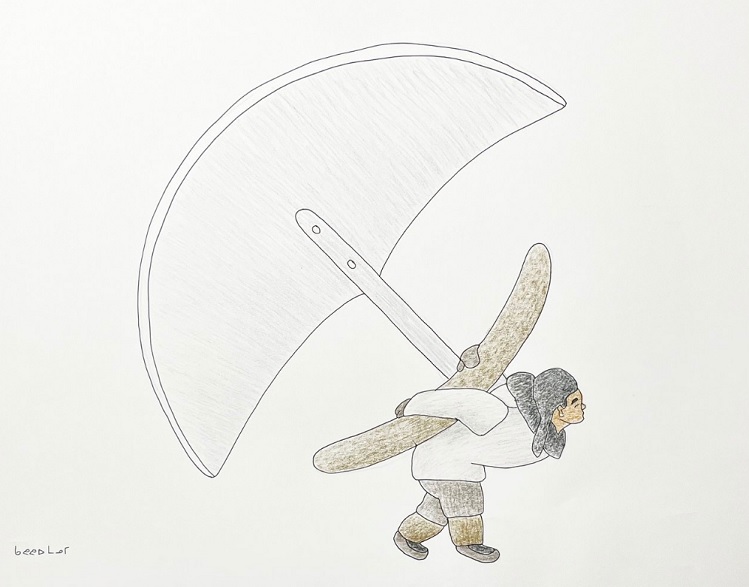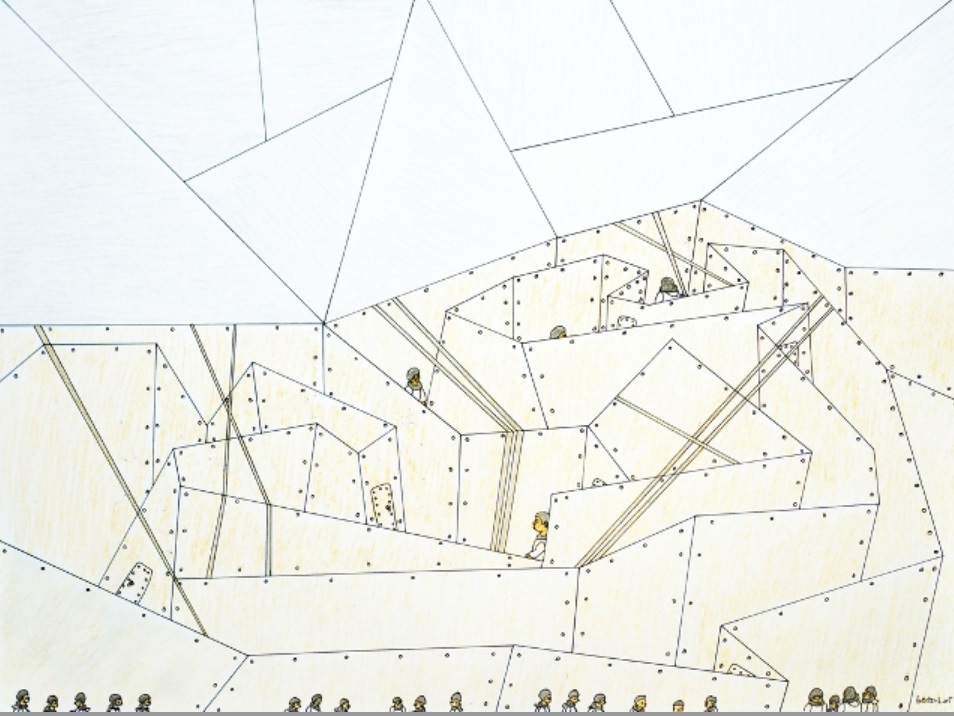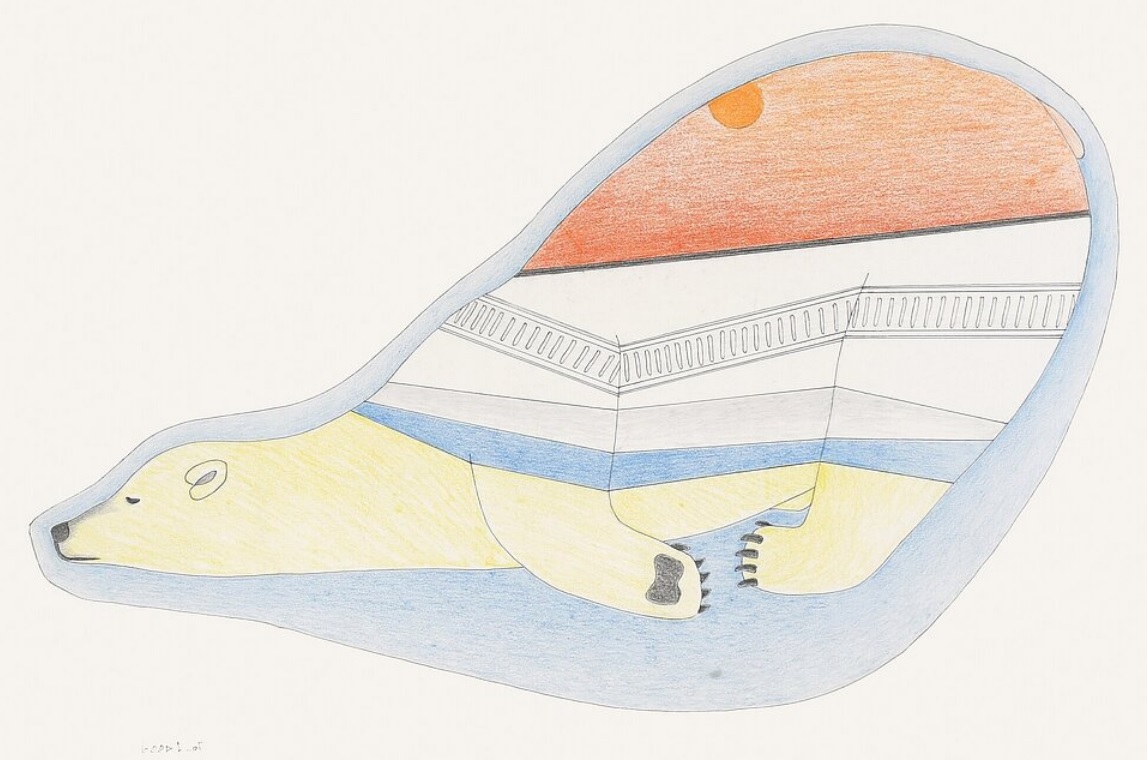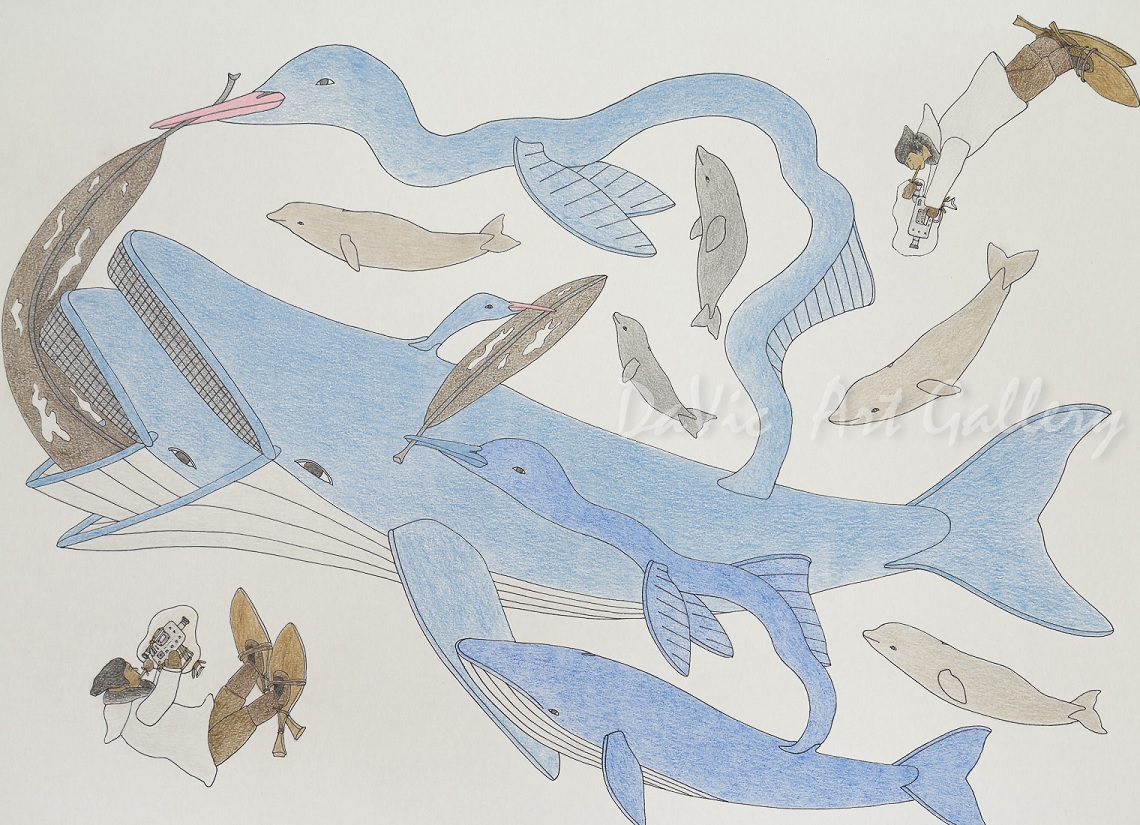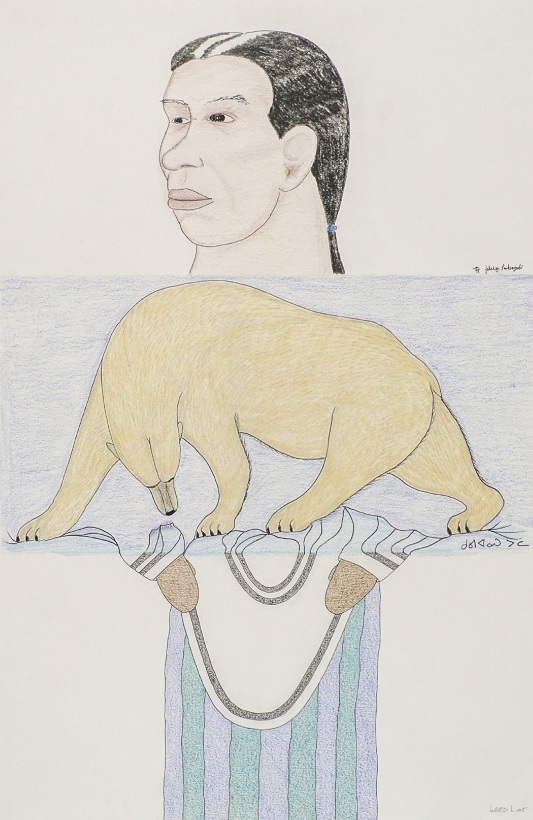
Qavavau Manumie
Qavavau has demonstrated a range of stylistic abilities over the years – from the very literal to the more expressive. His work is idiosyncratic and often amusing in his depictions of Inuit legends and mythology, Arctic wildlife and contemporary aspects of Inuit life Qavavau is the latest among the second generation to attract critical acclaim from the contemporary arts audience in the south. He and Shuvinai Ashoona have been profiled, along with Nick Sikkuark of Gjoa Haven, in the Winnipeg- based arts magazine, Border Crossings. He traveled to Toronto in June of 2008 for his first solo exhibition of original drawings, and in 2009 to Vancouver for another exhibition featuring his contemporary work. He was invited to attend an opening of his work in Victoria in the fall of 2012.
For several years Qavavau has worked for the Kinngait Studios as a printmaker – first in the lithography studio and more recently in the stonecut studio. He is an accomplished and precise printmaker who enjoys the opportunity to demonstrate printmaking techniques to young artists and visitors to the studio.
Qavavau Manumie is a Kinngait (Cape Dorset), NU based artist who focuses on printmaking and drawing. He began working as a printmaker in the 1980s at the West Baffin Eskimo Cooperative and quickly became a master printmaker. His work has been included in most Cape Dorset Print Collections from the mid 1990s onwards. In addition to printmaking Manumie has been drawing since his late teens and is a part of a new generation of artists that are re-defining subject matter in contemporary Inuit art. While Manumie’s prints are inventive, his drawings are more reflective of the depth of his distinctive vision. He pulls from reality for his drawings, and in particular that of the natural environment, which he blends with a lively imagination to create colourful and skilled works that are humorous and whimsical in both their portrayal and in the title.
A consistent theme in Manumie’s works are the ‘Inuralaat’ or little people. These tiny figures are put in relation to everyday objects such as a harpoon, a shovel and a television resulting in larger than life objects that the Inuralaat still manage to carry around. When he was a child, Manumie’s father told him tales of the Inuralaat, warning him to keep away if he saw their tracks as they might attack. In his drawings, the figures always seem to be moving and working with objects, offering a humorous insight into human-object relations and how such tools dominate daily life. Manumie also draws the natural world, which he depicts with the same amount of humour and inventiveness. His landscapes are also politicized; for example in untitled (disaster) (2007) a deep crack in the ice seems to be growing toward a settlement of people. The warming environment is emphasized by the deep blue of the water visible around the crack in the thin ice. The tiny figures will be forced to relocate as their home may soon dissolve into the water.
Manumie’s work combines both gritty scenes of reality and fantastical scenes taken from the artist’s imagination. He has a unique sensibility, which has contributed to his success as a contemporary artist. Manumie has exhibited work across Canada and abroad with pieces of his art as part of the public collections of institutions such as National Gallery of Canada, Ottawa, ON and the Canadian Museum of History, Gatineau, QC.













